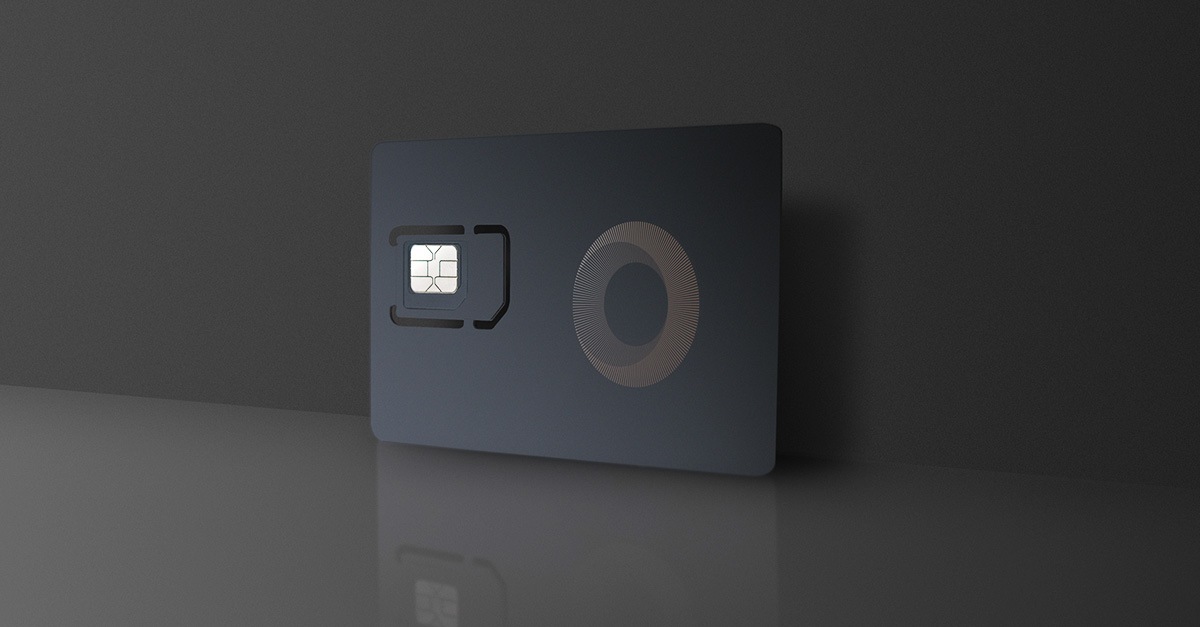IoT Connectivity Management Platform Services and Solutions for IoT Connectivity
IoT Connectivity Sim Managing IoT Connectivity Effectively
As the demand for the Internet of Things (IoT) continues to grow, so does the need to understand the assorted connectivity choices out there. Two major categories of connectivity usually under dialogue are cellular and non-cellular IoT connectivity. Each has its personal strengths and weaknesses, and the choice between them can considerably impact the efficiency and effectivity of IoT purposes.
Cellular IoT connectivity leverages established cellular networks to facilitate communication between gadgets. This type of connectivity sometimes options a number of subcategories, together with 2G, 3G, 4G, and now 5G technologies. Cellular networks offer widespread coverage, making them appropriate for applications that require mobility and extended vary. The intensive infrastructure already in place allows for speedy deployment, saving time and sources.
IoT Connectivity Service Providers Introduction to IoT Connectivity Options
Moreover, cellular connectivity often comes with robust security measures. The use of encryption and authenticated entry supplies a layer of protection that is critical for a lot of purposes, particularly in sectors coping with delicate information like healthcare and finance. This ensures that data transmitted between devices and networks is secure from potential cyber threats.
On the other hand, non-cellular IoT connectivity encompasses a range of other technologies, together with Wi-Fi, LoRaWAN, Zigbee, and Bluetooth. These choices can range considerably by way of range, data rates, and power consumption. Non-cellular solutions typically focus on particular environments, corresponding to residence automation or industrial settings, the place localized communication is extra sensible.

Non-cellular connectivity solutions are usually less expensive in environments where intensive cellular coverage may not be essential. They can also be easier to implement in smart buildings or localized networks. For occasion, Wi-Fi offers high knowledge rates and supports a vast variety of devices but is limited by range and protection.
IoT Global Connectivity Comprehensive Guide to IoT Connectivity Technologies
LoRaWAN, another well-liked non-cellular expertise, is designed specifically for long-range communication whereas consuming minimal energy. This makes it ideal for purposes requiring low information rates over extended distances, corresponding to agricultural sensors or smart city infrastructure. The trade-off comes in its decrease knowledge rate compared to cellular solutions, which is in all probability not appropriate for functions requiring real-time data transmission.
In contrast, cellular networks excel in purposes that demand constant connectivity over longer distances, like logistics and fleet management. The capability to take care of a connection on the transfer is significant for purposes that contain monitoring autos or assets across broad geographical areas. Additionally, roaming capabilities between totally different cellular networks improve connectivity for cell functions.
IoT Connectivity Companies Services and Solutions for IoT Connectivity
Another issue to suppose about is the maturity of the expertise. Cellular networks have been round for many years, benefiting from steady developments. Meanwhile, non-cellular technologies are comparatively newer and will not have the identical degree of reliability and robustness as cellular methods. Many organizations might find comfort and assurance in the tried-and-true nature of cellular connectivity, especially for important functions.
However, as IoT continues to evolve, so do non-cellular technologies. Ongoing developments in wi-fi standards are considerably enhancing the capabilities and performance of non-cellular options. With advancements in Low Power Wide Area Network (LPWAN) technologies, there's increasing curiosity amongst builders and businesses looking to deploy IoT devices that require much less energy and wider protection at a decrease value. Managed IoT Connectivity Platform.
Cloud Connectivity In IoT Basics of Global IoT Connectivity

The panorama of IoT connectivity is ever-changing, which makes the choice between cellular and non-cellular connectivity highly context-dependent. Various elements, including the precise application requirements, coverage wants, price constraints, and safety concerns, strongly affect this alternative. The proper connectivity choice can enhance operational efficiency, enhance information assortment, and provide timely insights for decision-making.
When evaluating which option fits finest, it is crucial to assess not solely the instant wants but in addition the longer term growth potential of the applying. In some circumstances, hybrid options that leverage both cellular and non-cellular connectivity may present the most effective of both worlds. For instance, an utility may utilize cellular connectivity for broader data transmission and non-cellular choices for localized, low-power communications.
Cloud Connectivity In IoT Simplifying Global IoT Connectivity with eSIM
The rise of 5G know-how additional complicates the panorama but in addition offers alternatives for both cellular and non-cellular options. With its potential for ultra-low latency and excessive data charges, 5G may enhance the viability of cellular IoT for purposes that beforehand relied on non-cellular solutions. Yet, non-cellular technologies proceed to improve, carving out niches that cellular networks could not optimally serve.
In closing, cellular vs. non-cellular IoT connectivity presents a complex alternative with far-reaching implications. Each connectivity sort brings distinctive benefits and limitations that cater to various application wants. As IoT technology advances and matures, the final word choice hinges on specific project requirements, use circumstances, and future scalability issues. Understanding the nuances of every option can present the necessary insight to make an knowledgeable decision, paving the greatest way for successful IoT deployments (Cellular Connectivity Providers For IoT).
- Cellular IoT connectivity uses established mobile networks, providing broad coverage and reliable signals in urban and rural areas.
- Non-cellular IoT connectivity, such as LPWAN (Low Power Wide Area Network), is specifically designed for low-bandwidth applications, prioritizing energy efficiency over speed.
- In cellular networks, data transfer rates can be higher, supporting applications that require real-time information transmission, corresponding to video surveillance or autonomous autos.
- Non-cellular solutions often have longer battery life, making them best for units requiring minimal maintenance, like environmental sensors and smart meters.
- Cellular IoT sometimes includes higher operational costs because of subscription fees and information plans, whereas non-cellular choices may be cheaper for giant deployments.
- Security protocols in cellular networks are strong, benefiting from the infrastructure of established telecommunication providers.
- Non-cellular technologies can employ less complicated and extra localized safety measures, doubtlessly resulting in vulnerabilities in certain implementations.
- Scalability is generally easier with cellular networks, which might assist an enormous number of devices concurrently with out vital degradation in performance.
- Non-cellular IoT may provide higher flexibility in network design, permitting companies to tailor solutions specifically to their operational wants without reliance on a mobile provider.
- Depending on the applying, hybrid models integrating both cellular and non-cellular connectivity can optimize total performance and cost-efficiency.undefinedWhat is the difference between cellular and non-cellular IoT connectivity?undefinedCellular IoT connectivity makes use of cellular networks (like 4G or 5G) for data transmission, whereas non-cellular options embody technologies like Wi-Fi, BLE (Bluetooth Low Energy), and LoRaWAN, which function independently of mobile provider networks.
When is it greatest to use cellular IoT connectivity?undefinedCellular connectivity is good for applications requiring extensive coverage, mobility, and real-time data transmission, corresponding to vehicle monitoring or smart wearables, the place reliability and speed are crucial.
IoT Connectivity Introduction to IoT Connectivity Options
What are some nice benefits of non-cellular IoT connectivity?undefinedNon-cellular choices are sometimes cheaper for top article functions with lower knowledge transmission needs, such as smart house units or environmental sensors, they usually can utilize current infrastructure like Wi-Fi networks.

How do costs compare between cellular and non-cellular IoT connectivity?undefinedCellular options usually contain ongoing subscription charges for community access, while non-cellular technologies often incur lower preliminary prices and fewer recurring bills, making them economical for sure use instances.
Can I change from non-cellular to cellular IoT connectivity later?undefinedYes, many units are designed with flexibility in mind, allowing for upgrades or changes from non-cellular to cellular connectivity if future wants dictate a necessity for broader coverage or higher reliability.
What kind of gadgets are finest fitted to cellular IoT connectivity?undefinedDevices that require constant connectivity, such as fleet administration techniques, distant monitoring tools, and telehealth applications, usually profit most from cellular networks due to their in depth coverage and support for mobility.
IoT Connectivity Management Platform Overview of IoT Connectivity Technologies
Are there limitations to utilizing non-cellular IoT connectivity?undefinedYes, non-cellular connectivity can face limitations like range (for technologies like BLE), reliance on local networks (Wi-Fi), and less capability to help mobile functions, making them much less ideal for certain eventualities that demand reliability.
What safety concerns ought to I remember for either connectivity type?undefinedCellular networks generally provide built-in security measures, but non-cellular options could be more prone to native threats. IoT Connectivity Companies. Always use encryption and secure authentication strategies to mitigate dangers across each kinds of connectivity.
How does latency compare between cellular and non-cellular IoT connectivity?undefinedCellular networks often have decrease latency, making them appropriate for real-time view publisher site applications, while non-cellular solutions may expertise higher latency, particularly with bigger networks or crowding, which can influence performance.